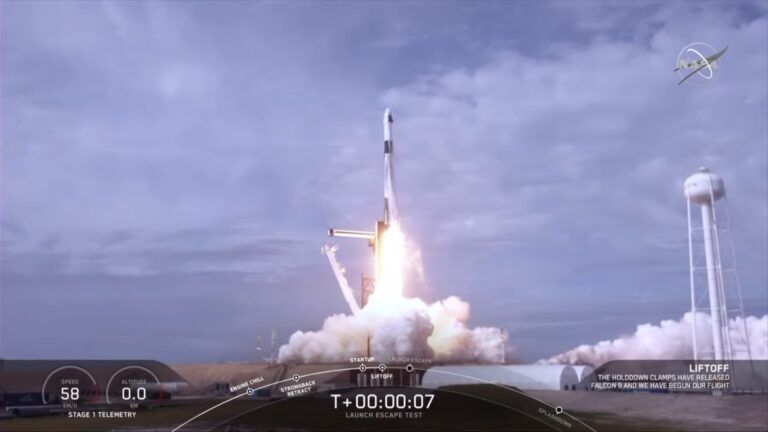NASA and SpaceX have completed the final major test, a launch escape demonstration, of the Crew Dragon spacecraft before it begins ferrying astronauts to the International Space Station.
The launch escape test showed the Crew Dragon spacecraft’s capability to safely separate from the rocket in the unlikely event of an inflight emergency.
The launch escape demonstration took place on January 19 from NASA’s Kennedy Space Center in Florida.
NASA Administrator Jim Bridenstine said, “This critical flight test puts us on the cusp of returning the capability to launch astronauts in American spacecraft on American rockets from American soil. We are thrilled with the progress NASA’s Commercial Crew Program is making and look forward to the next milestone for Crew Dragon.”
As part of the test, SpaceX configured Crew Dragon to trigger a launch escape about 1.5 minutes after liftoff. All major functions were executed, including separation, engine firings, parachute deployment and landing. The Crew Dragon splashed down just 8 minutes after lift off the Florida coast in the Atlantic Ocean.
“As far as we can tell thus far it went as well as one can possibly expect,” said Elon Musk, Chief Engineer at SpaceX. “This is a reflection of the dedication and hard work of the SpaceX and NASA teams to achieve this goal. Obviously, I’m super fired up. This is great.”
The Falcon 9 rocket broke apart as planned during the test flight.
Prior to the flight test, teams completed launch day procedures for the first crewed flight test, from suit-up to launch pad operations. Engineers are now reviewing data from these procedures prior to NASA astronauts flying the system during SpaceX’s Demo-2 mission.
The Demo-2 mission, which is scheduled for “early 2020” will carry two astronauts to the International Space Station (ISS) for an 8-day stay and then return them with an Ocean splashdown.
As long as Demo-2 NASA’s Commercial Crew Program is successful, SpaceX will conduct six operational missions to the ISS as part of a US$2.6 billion contract it was awarded by NASA in 2014.





